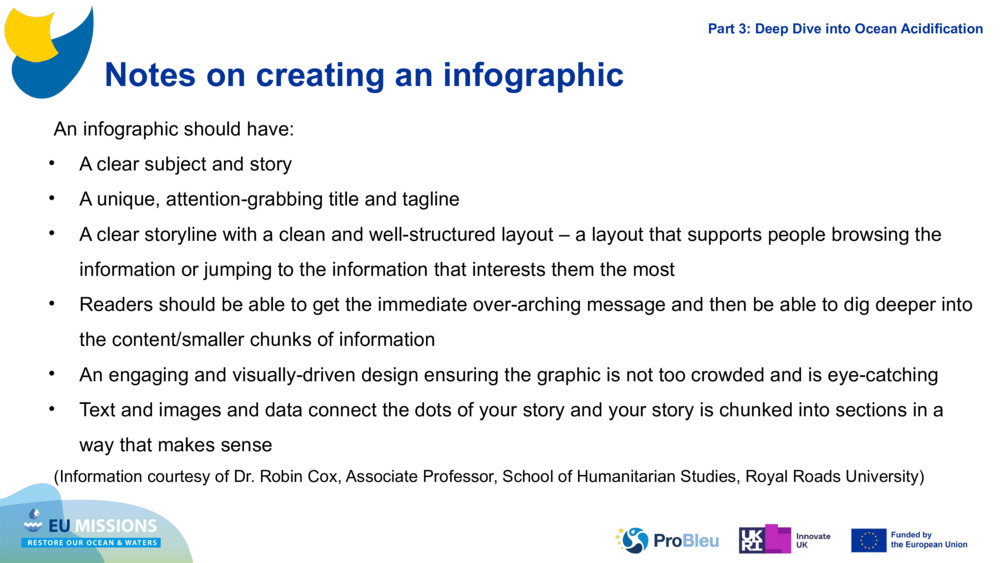Notes on creating an infographic
Notes on creating an infographic
Notes on creating an infographic An infographic should have: A clear subject and story A unique, attention-grabbing title and tagline A clear storyline with a clean and well-structured layout – a layout that supports people browsing the information or jumping to the information that interests them the most Readers should be able to get the immediate over-arching message and then be able to dig deeper into the content/smaller chunks of information An engaging and visually-driven design ensuring the graphic is not too crowded and is eye-catching Text and images and data connect the dots of your story and your story is chunked into sections in a way that makes sense (Information courtesy of Dr. Robin Cox, Associate Professor, School of Humanitarian Studies, Royal Roads University) Part 3: Deep Dive into Ocean Acidification

Diaporama original : Water Chemistry with Plymouth Marine Laboratory
Sujets: Ressources durables. Désoxygénation. Océan. Eau douce. Chimie de l’océan. Pollution par les nutriments.
Âges appropriés : 12. 13. 14. 15. 16. 17. 18.
Mots-clés: Acidification des océans. Acidité. Agriculture. Alcalinité. Biologie. Carbone. Chimie. Dioxyde de carbone. Eutrophisation. Hypoxie. Indicateurs. Molécules. Nutriments. PH. Réactions chimiques.
Telechargé par : pml-admin
Nombre de bundles utilisant ce contenu : 1
Licensed under CC BY 4.0
Ce contenu a été utilisé dans les groupes de ressources suivants :
Chimie de l’eau avec le Plymouth Marine Laboratory
L’enseignement de la chimie de l’eau est important parce qu’il relie d...
Voir l’article scientifique